Handlebar tape is a rider’s personal preference. Some professional riders opted for an older tape technology on a newer bike. But if you want to be time-correct, you will find the below guidelines to be very handy.
Prior to 1975 there was hardly any noteworthy alternative to cotton bar tape. Synthetic imitations with interesting surface finishes were spreading on budget race bikes and randonneurs, but for high end bicycles cotton bar tape was still the standard. Since the late seventies many different handle bar tape products were available, I’ll point you at the trendsetters to help you with a perfect restoration.
Before 1975: Cotton bar tape
You can’t go wrong with cotton bar tape on any race bike dated prior to 1975. If used without any treatment, it feels rather comfortable and absorbs sweat. If you want to have the full professional look, finish it with 3-5 coats of Shellac. Bespoke & Wheel has a really nice tutorial on how to do that.

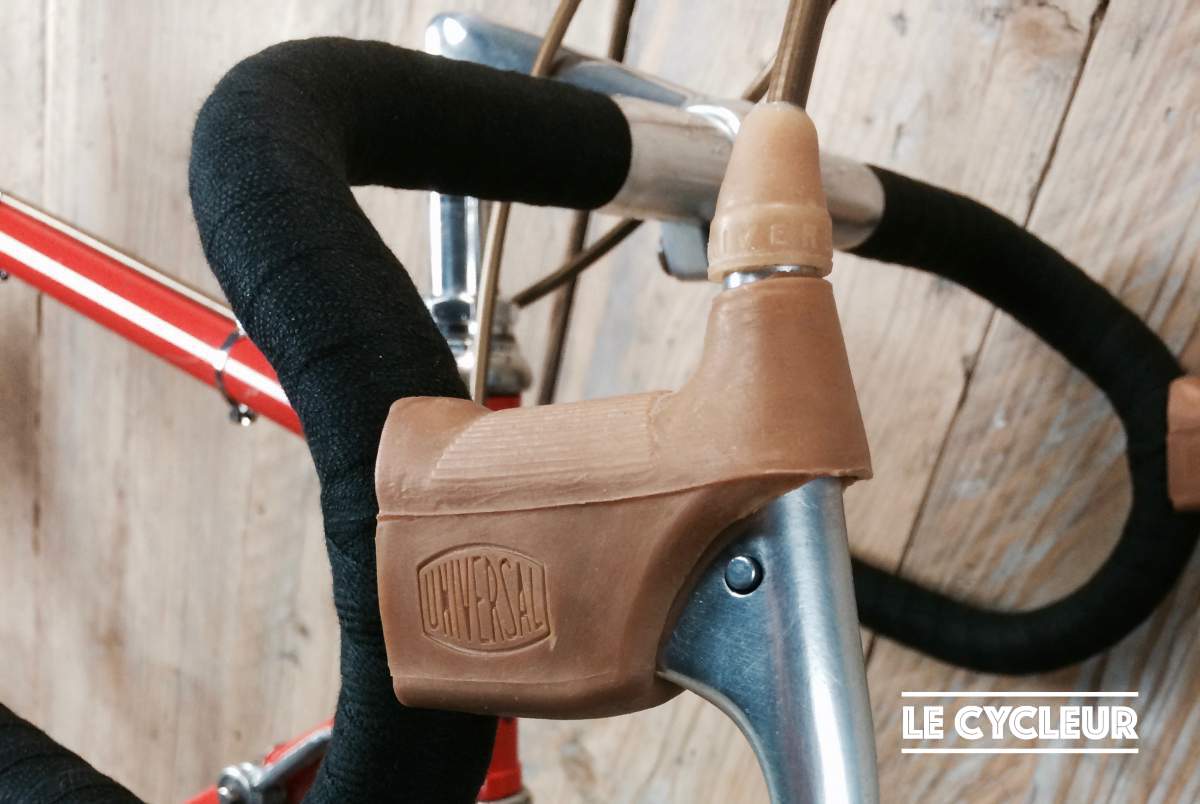
Looking for a budget solution?
Try standard cotton band which you can buy at your local textile / hobby shop. It has no self-adhesive backing but you can easily solve this by applying some strips of self-adhesive tape along the length of your handlebar before winding the cotton tape around the bar. Fix it at the open bar end with a wine cork.
Although colour options were limited to black or white in te past, nowadays different brands (eg. Newbaums) are offering cotton bar tape in a variety of colours.
Fyi: Eddy Merckx used white cotton tape and Shellac on his 1966 Peugeot.
1976 – mid eighties: Benotto cello-tape
Benotto introduced the cello-tape in the mid seventies. Since the oldest catalogue we found featuring a Benotto tape is 1976, I suggest not to use it on a bike dated before that time.
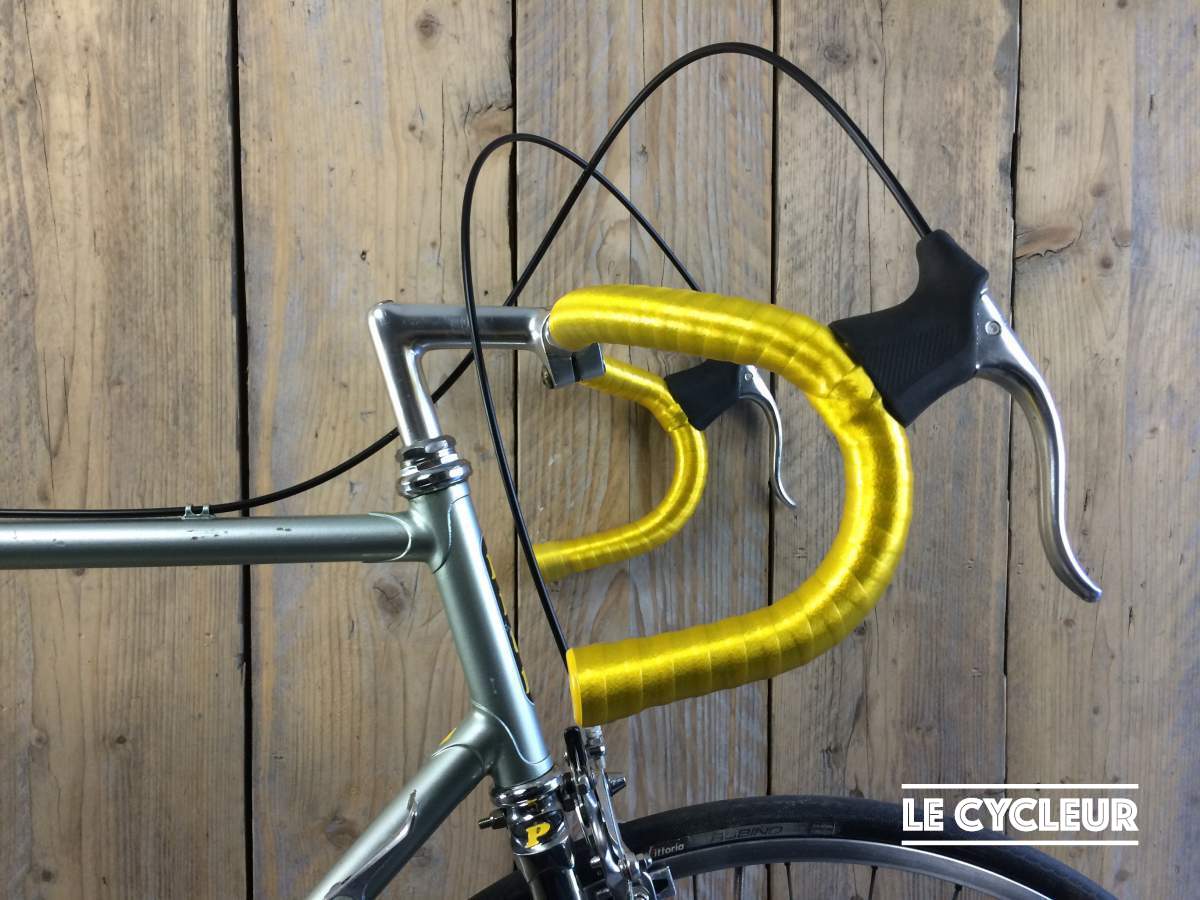

Benotto cello-tape is rather hard to apply since it had no self-adhesive tape and the the tape is always on the short end. Moreover, it doesn’t give a good grip without gloves. Nevertheless, it became the instant favorite of many professional (and recreational) cyclists. Its variety of colours and aerodynamic looks are still very convincing nowadays, I believe.
Although this Benotto cello-tape is only one example of flat synthetic bar tape, it was the absolute choice of professionals. Other synthetic tapes lacked the quality of Benotto tape and were originally in a lower price range so you will usually find them on budget bikes.
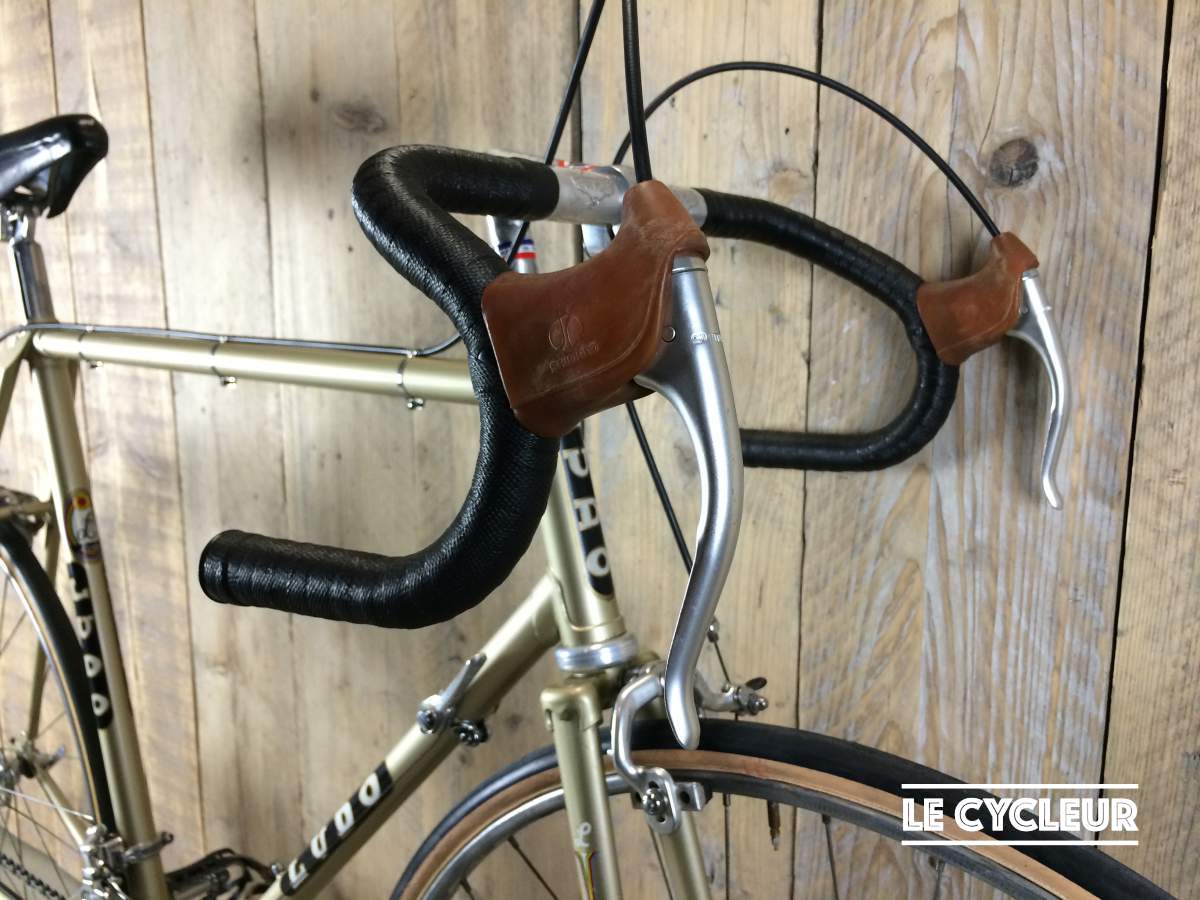
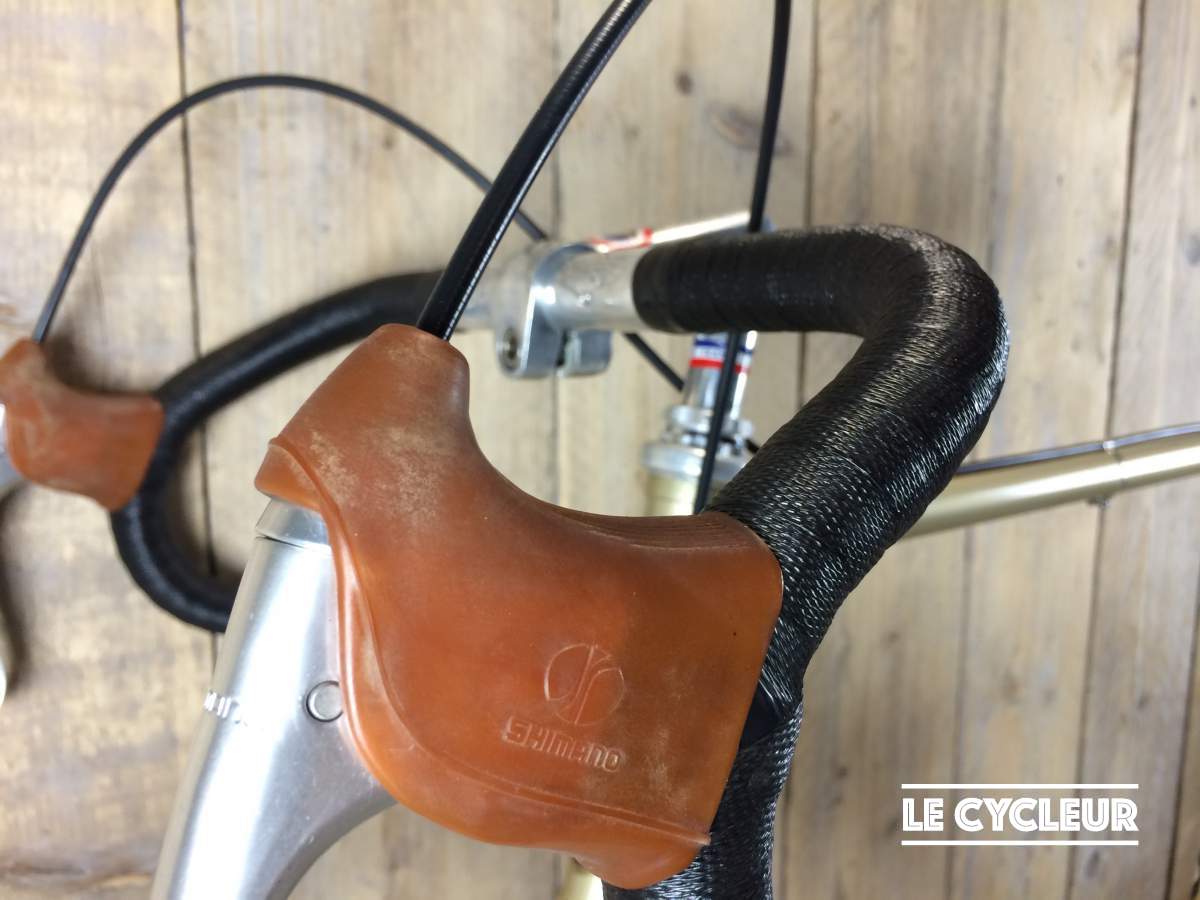
Where to buy?
Nowadays you can still find original Benotto bar tape at a decent price in may different colours from old stock. Just browse Ebay or ask your local vintage cycling community. And if you are looking for a low-budget alternative, you will find an Asian imitation easily through Google.
1975 Padded Synthetic tape, Bike Ribbon
Ermanno Alberti (source: bikeribbon.com) invented the variable thickness bar tape in 1975 as a solution to the rather low-comfortable alternatives, mainly cotton tape and flat synthetic tape.
It is only in the 1980’s though, with the introduction of imitation leather (synthetic) tape in a variety of colours and prints, that Bike Ribbon became widespread on both high end race bikes and touring bikes.

Where to buy?
The company still exists and is producing some variants of the original Bike Ribbon from the early eighties. If you google it, you will find some very interesting offers from old stock too.
1975 Hand stitched leather bar cover, Almarc
Also in 1975, another Italian Roberto Lissoni from the brand Almarc started producing beautiful hand stitched leather bar end covers that came pre-fit on some (Italian) bicycles or were custom made to order. Still today, you can order your kit and matching accessories through the company’s Facebook page!
Gios and Bianchi were two of the brands offering the Almarc leather kit as an option.
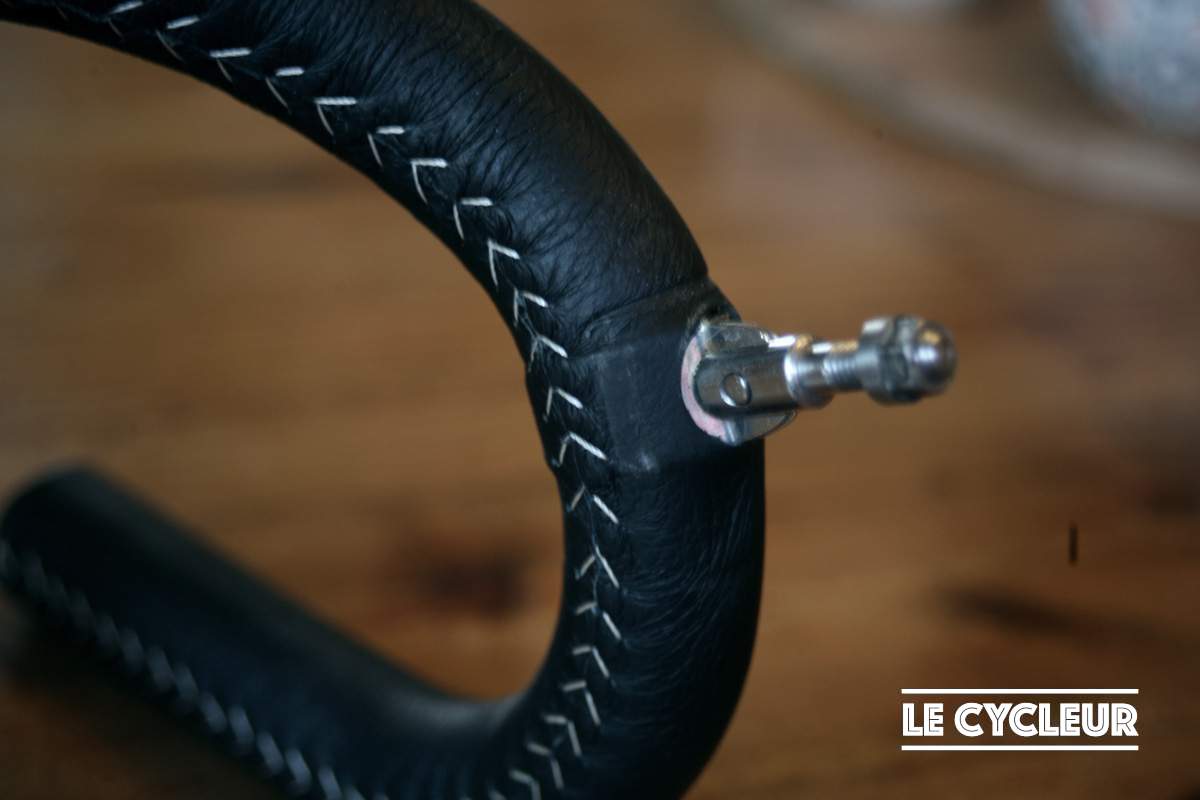
1987: Cork (particles with EVA base), Cinelli
It is hard to imagine a nineties bike without a cork handlebar. Since cork on itself has no tensile strength, cork particles were integrated in a base of EVA foam, creating a very soft and comfortable grip.
It was Cinelli that introduced this very comfortable alternative to synthetic handlebar tape in 1987. Nearly 30 years later, cork blend is still amongst the most popular handlebar tapes around the globe.
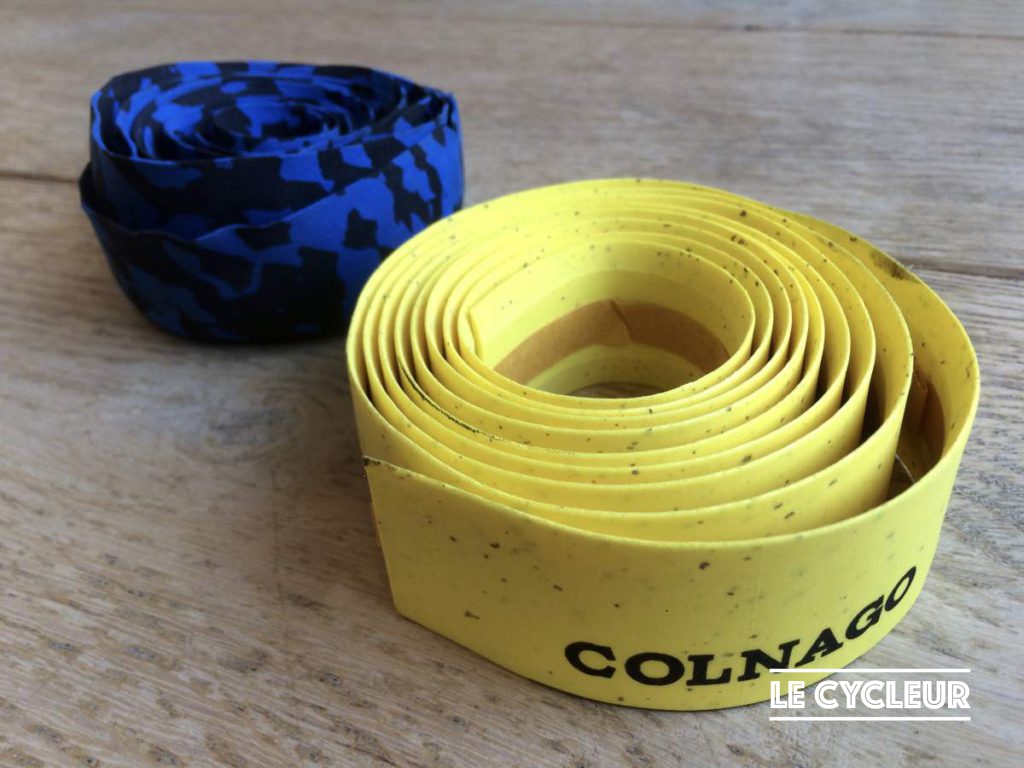
Synthetic rubber and foam handlebar sleeves
Integrated synthetic rubber or handlebar sleeves, expanded foam grips, … we have seen them all. Although they were not commonly used by professional racers, certain manufacturers pre-fitted it on some of their bicycles. Most of these solutions never made it to the aftermarket (except for repairs at the bicycle shop) for various reasons (price, hard to install, lack of flexibility, …).
For a perfect restoration, always check your bike’s catalog to find out the original specifications.

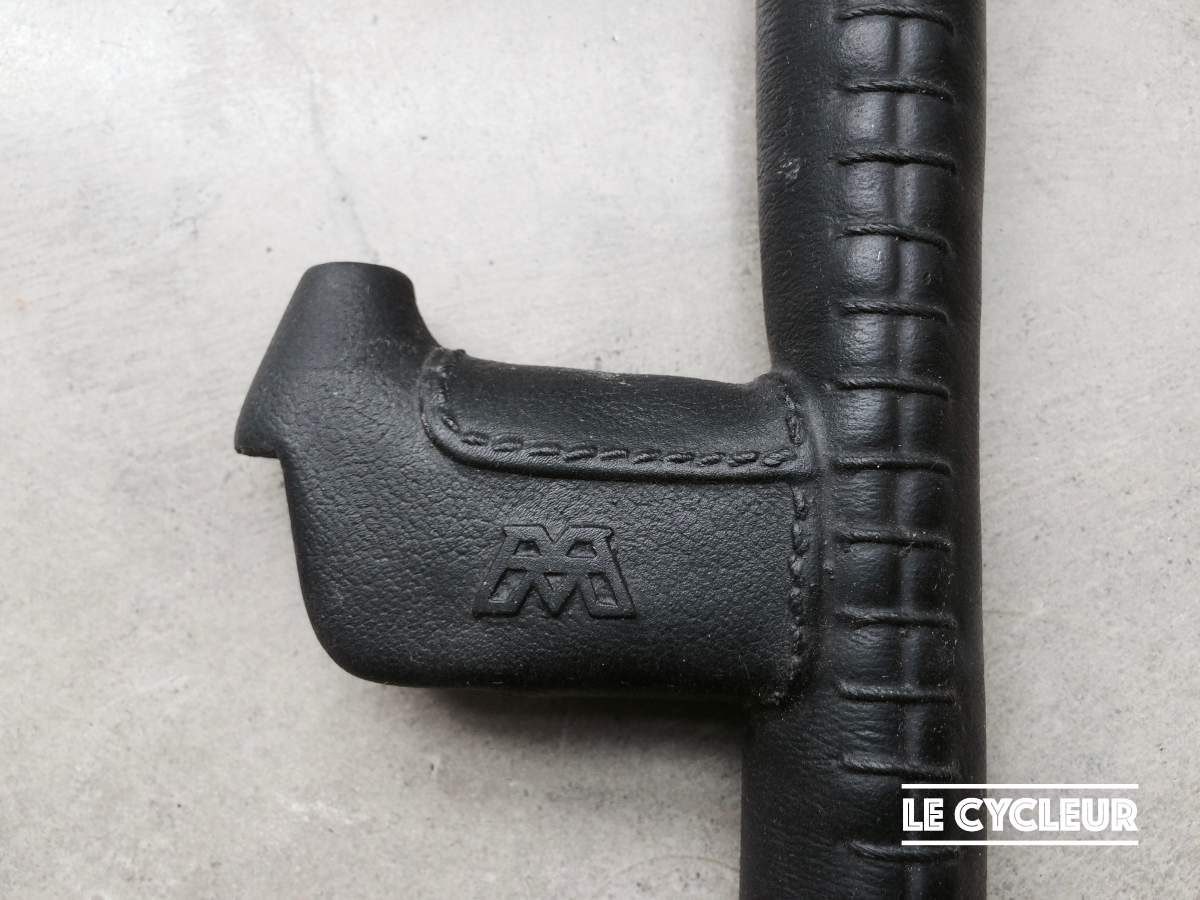
Leather bar tape and other ‘recent’ alternatives for vintage or retro bikes
Indeed, there’s lots of retro bicycles and restored vintage bicycles out there with both synthetic and genuine leather handlebar tapes. If you are not a vintage bicycle purist or an animal rights activist, leather bar tape might be the comfortable and durable modern alternative you are looking for.
We might consider writing a special blog on contemporary alternatives.
Overview
We created a compact graphic guide for you to download and use whenever you need to choose the right handlebar tape for your next project:
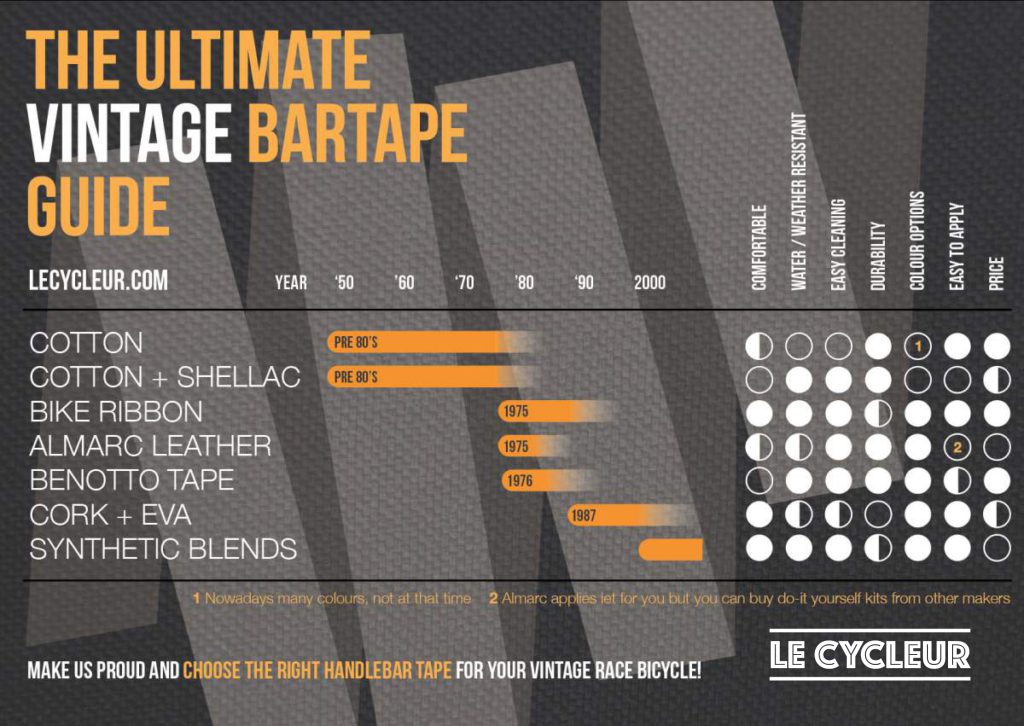
Any remarks or questions? Need advise on your own project? Please, drop your comments below!


Hello,do you have a handlebar cover for a motobecane in darkred.
Best Regards. Jan Weersing
Hi Jan, unfortunately we have no Motobecane handlebar wraps left.
Best regards, Stefan
Looking for hitchinson bar tape for 1980s motobecane mirage sport in black. Got any to sell? Also i heard that it you use bouling oe very hot water to expand the sleeve it comes right off. Not sure havent teied
I’m afraid we have sold all of them
Do you carry white tape for my 1973 Woodrup?
Thanks!!
Hi Steven, unfortunately we haven’t found a good supplier for a large quantity of white cotton tape, most of our builds contain nos veloflex handlebar tape
HI’
I guess you are wrong in dating the Cinelli cork eva handlebar tape to 1987.
Acording to Cinelli.it it was invented and brought to market in 1983:
http://cinelli.it/en/original-cork-ribbon/
thanks, it seems that you are right indeed, never ever had a bicycle with cork from that era tho, always Benotto or bike ribbon. thanks for the link! we will rewrite that part
Hi guys,
do you know how to remove the Motobecane
integrated rubber handlebar grips made by Hutchinson?
any links to youtube or articles how to do it would be much appreciated.
thanks
Ed from Australia
I would suggest a needle injection with lots of soap and water, they are hard to get on and even harder to get off unless you cut them up…
I am interested in a set of new old stock Hutchinson rubber sleeves with integrated brake hood for an old Motobecane bike from the 1980s that I am restoring (my own bike from when I was a kid). If you have a set of wraps (as indicated in your blog) I would like to purchase them. Please email me to let me know. Thx!
I have a pair without the integrated hoods
Hi guys!
Great post, thank you!!
Quick question though – hasn’t that 1978 Ludo got cotton with shellac tape? If not, I would very much like to get my hands on that glossy tape with a rough surface.
Hi Alexander, The Ludo has a plastic bar tape indeed. We have a few tapes lying around for restorations, none for sale unfortunately.
Thanks for this .. great work !!
I have used cotton, Benotto, cork and leather, now going back to full leather wrap
Cotton is Ok, shiny bar take looks great but hard on the hands even with gloves
Leather is now my choice 🙂
What a fine, helpful post for vintage cyclists!
Thank you!
Ford Kanzler
Watsonville, California, USofA
Before 1975: Cotton bar tape ….. Wrong , I own an orange LUDO race bicycle of 1974 , full original condition , it has white flat synthetic bar tape,
Hi Ken, thanks for your comment. You are absolutely right that synthetic tape was used prior to 1975. Please make sure to read the complete article. Besides Benotto tape, there are many other synthetic bar tapes that have been around at least from the sixties. But these were mainly used on ‘demi-course’ (half race) bikes, or what you could refer to as low to mid-range race bikes for economic reasons and because it was easier to maintain. I have bikes from the sixties and early seventies with synthetic tape. But at that time, cotton tape was the absolute choice for high-end race bikes, until Benotto cello tape was released to the market. That’s exactly why, in this guide, we advise cotton bar tape for restorations prior to 1975.
Please enjoy your Ludo and feel free to send us pictures of your bike or questions to quickrelease@lecycleur.com
Cheers, Stefan
Ok, I have to ask – do you have any of the Motobecane integrated rubber sleeves for sale? My 1982 Grand Record suffered from a concrete water drip right into the brake lever,, which probably means at least separating the original integrated hood/grip to replace a badly corroded brake l;ever.. Or are these impossible to install without the secret technique? Thanks!
Look for a handlebar tape with a nice tacky finish that you help you maintain grip when riding in wet conditions something that is particularly important if you re riding without gloves.
I found a pair of those Motobecane handlebar sleeves at an autojumble in France at the weekend – wish I’d bought them now! The same seller had a couple of boxes of new old stock cloth tape from the 70s in blue, green, orange and red, so it wasn’t just a choice of black or white in the past…